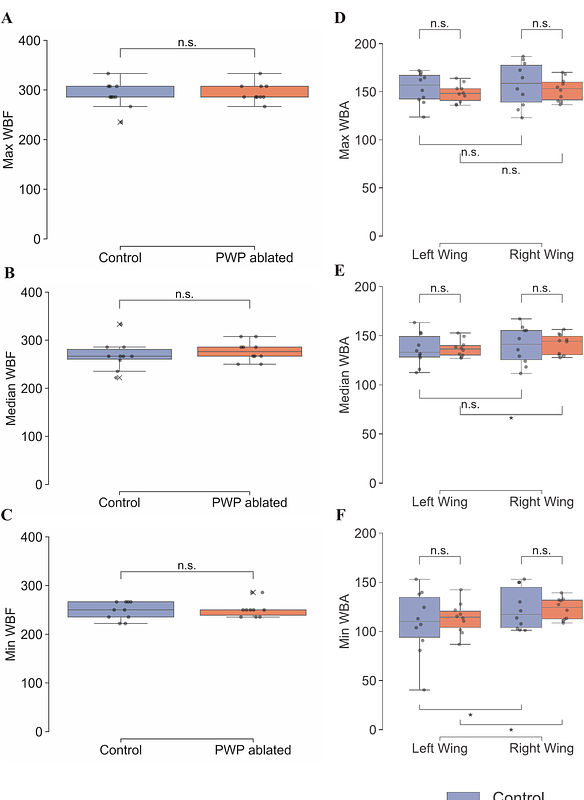Testing the gearbox hypothesis for insect flight control

Testing the gearbox hypothesis for insect flight control
Ghosh, A.; Kumar G.S., G.; Sane, S. P.
AbstractSustained flight in flies requires wing movements at frequencies ranging between 100-1000 Hz, powered by asynchronous flight muscles whose contraction rate exceeds direct neural stimulation. These muscles attach to the thoracic walls in an indirect flight muscle (IFM) configuration, generating thoracic deformations that drive wing flapping, while smaller steering muscles adjust wing kinematics stroke-by-stroke. The wings articulate with the thorax via the wing hinge, in which the radial stop (RS) and a grooved pleural wing process (PWP) interact to form a mechanical gearbox system, proposed to modulate wingbeat amplitude during maneuvering. Supporting this gearbox hypothesis, previous studies observed close RS-PWP interactions during fictive turns in tethered flies. An alternative, though not exclusive, hypothesis suggests that steering muscles govern wingbeat amplitude modulation. However, the gearbox hypothesis had not been rigorously tested in freely flying insects. Here, we first assessed the morphological diversity of the RS-PWP-Pterale C complex across Diptera using scanning electron microscopy and found substantial variation, particularly in PWP morphology. We next tested gearbox function by bilaterally ablating the PWP in freely flying houseflies (Musca domestica), which were released into an L-shaped arena requiring 90 degree yaw turns. Kinematic analyses revealed no significant differences between control and PWP-ablated flies across various wing and body parameters during yaw turns. Both groups could differentially modulate wingbeat amplitude during turns, a key mechanism for yaw torque generation. These findings indicate that the PWP is not essential for wingbeat amplitude modulation, and suggest that steering muscles may primarily control amplitude control during manuevers. Our results challenge the gearbox hypothesis and underscore the flexibility of the dipteran flight control system.